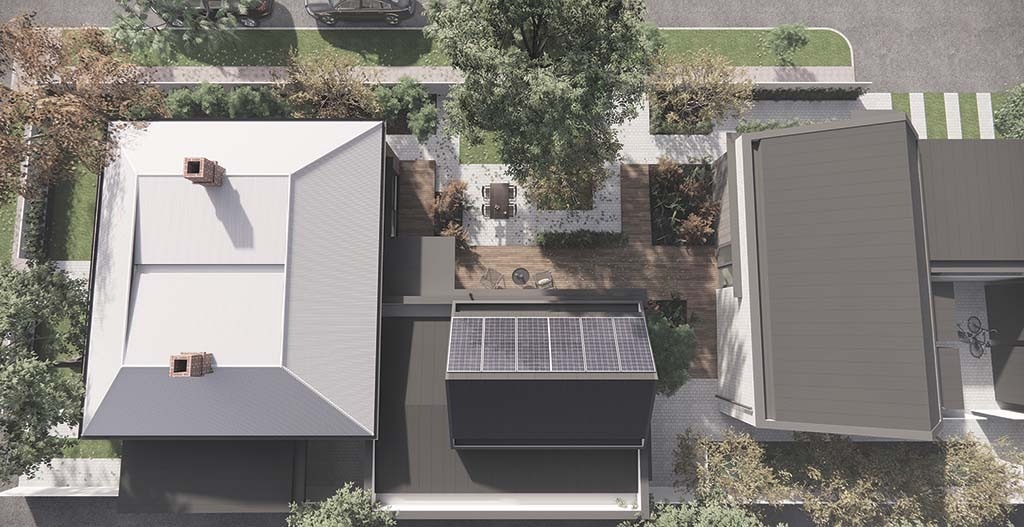Co-locating homes on single suburban allotments to create smaller and more socially connected living options could help address the nation’s housing crisis, according to a University of South Australia researcher.

Image Credit: University of South Australia
A leading architecture researcher from UniSA, Dr Damian Madigan says a new land definition and co-located infill model he defines as ‘bluefield housing’ could help provide new housing options for older people, first home buyers, and those wanting to downsize.
This alternative suburban infill model involves altering and extending established homes on single blocks, leveraging the capacity of many suburban allotments to support more than a single house, while preserving the original character of the neighbourhood and enhancing landscape and suburban tree canopies.
A policy framework to facilitate co-located housing is currently being drafted under South Australia’s Planning and Design Code. Communities across several SA councils will be engaged to provide feedback on the draft changes in 2024.
In his new book Bluefield Housing as Alternative Infill for the Suburbs, Dr Madigan suggests this new form of living could provide people with the opportunity to embrace smaller and more affordable housing by avoiding ‘knock-down-rebuild’ development and making better use of what we have.
“It’s become increasingly clear in recent years that the established suburbs will have to play their part in supporting an increase in housing supply, affordability and choice,” he says.
“Undeveloped greenfield sites, although often contentious, will continue to be given over in some form to create new land releases. Meanwhile, brownfield and greyfield sites remain as places where old industrial and residential properties get demolished to make way for medium-density housing forms.
“However, we need to think about the future of housing in our older established suburbs, which desperately need smaller and more affordable housing options. I call these the ‘bluefields’ – they’re the older neighbourhoods that are difficult to strategically densify but are still changing through knock-down-rebuild developments that gradually erode character and increasingly drive-up prices.”
Australia’s housing crisis has been recently exacerbated by soaring house prices and rental costs, a persistent shortage of new housing, a dwindling supply of vacant rental properties, and a significant increase in interest rates.
Bluefield housing is described as sitting on a housing spectrum somewhere between a single-family home and a unit development, but unlike most unit developments the houses are not fenced off from each other. Rather, an existing house is retained, reconfigured, and extended to become more than one dwelling. Unlike a ‘granny flat’, there is no main house and secondary dwellings. Instead, the existing house, infill homes and garden are designed as a holistic development and without a hierarchy.
A single yard space with room for trees is shared by all residents, while facilities such as laundries or additional living spaces can also be shared if the residents desire and the necessary approvals are received.
Dr Madigan says while the bluefield housing model wouldn’t match the housing numbers created by high density apartment buildings, it could lead to a doubling or tripling of the number of homes on lots without disrupting the neighbourhood character of the area.
“The detached single-family home is still hugely desirable and functional for many people in our community, but it’s also no longer suitable to many other parts of our community, and is simply unattainable for others,” he says.
“Many suburbanised cities – Adelaide included – have a dominance of large and expensive housing with little choice for people who want to transition to something smaller and more affordable. That’s not to say that large single-family homes are bad or should be discouraged, of course, but our older suburbs would certainly benefit from greater housing choice. The bluefields present a tricky problem, but sensitively co-locating new homes with the old offers a way forward.”